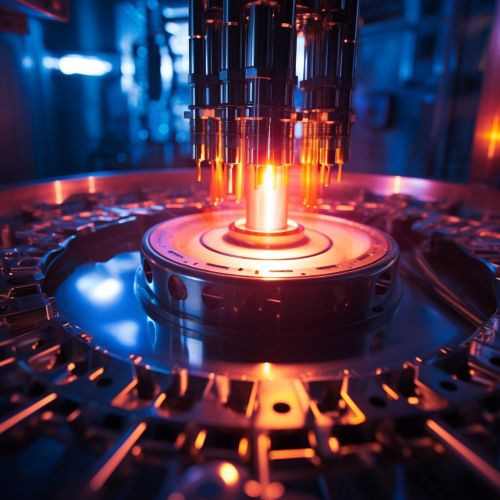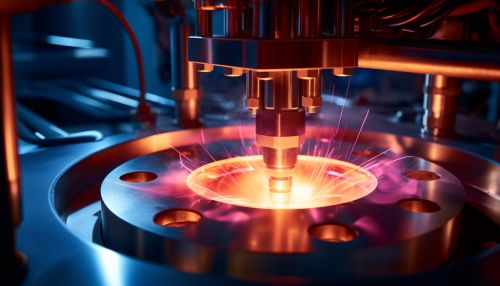Plasmon
Introduction
A plasmon is a quantum of plasma oscillation. Just as light (an optical oscillation) consists of photons, the plasma oscillation consists of plasmons. The plasmon can be considered as a quasiparticle since it arises from the quantization of plasma oscillations, just like how phonons are quantizations of mechanical vibrations. Thus, plasmons are collective (many-body) oscillations of the free electron gas density. For example, at optical frequencies, plasmons can couple with a photon to create another quasiparticle called a plasmon polariton.


Theoretical Background
The existence of plasmons was first predicted by David Pines and David Bohm in 1952 and was observed experimentally soon after by Rufus Ritchie. Plasmons can be described in the classical picture as an oscillation of electron density with respect to the fixed positive ions in a metal. However, a full quantum mechanical description involving the quantization of these oscillations is more complex.
Properties of Plasmons
Plasmons can couple with electromagnetic radiation to create a plasmon polariton, which is a coupling of the collective oscillations of free electrons (plasmons) and the electromagnetic field. This coupling can occur because the oscillating electric field of the light drives the oscillation of the electrons.
Plasmons are a propagating collective oscillation of electrons, often at optical frequencies, which can exist at interfaces between materials where the real parts of the dielectric function change sign across the interface. Because of their charge, these electrons are strongly coupled to electromagnetic fields, which gives rise to the plasmon's dispersion relation and resonance frequency.
Surface Plasmons
Surface plasmons are those plasmons that are confined to surfaces and that interact strongly with light resulting in a polariton. They occur at the interface between a vacuum or material and a metal. If the photon's energy is too low to excite a plasmon, it will be reflected, resulting in total internal reflection. The momentum of the photon can be adjusted by altering the angle of incidence, and for a specific angle, the energy and momentum will match that of a surface plasmon. This allows the photon to couple to the plasmon, and the energy is transferred into the surface plasmon.
Applications of Plasmons
Plasmons have been used to enhance the performance of optical and electronic devices. They are used in surface plasmon resonance sensors to detect small changes in the refractive index of a medium. They are also used in plasmon-enhanced spectroscopy to increase the sensitivity of spectroscopic measurements.
Plasmons are also being investigated for use in plasmonics, a new branch of photonics, for applications ranging from quantum information processing to biomedical imaging. The field of plasmonics is still in its infancy, but it holds promise for a wide range of applications.
